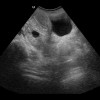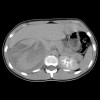
 IJCP Editorial Team
IJCP Editorial Team
Case-based Interactive Discussion
Hepatic perihilar masses other than cholangiocarcinoma (CCA) include TB, sarcoidosis, infl ammatory pseudotumor, IgG4 cholangiopathy, lymphoma.
In patients with CCA, ultrasound shows the level of biliary obstruction. Endoscopic retrograde cholangiography (ERC) defi nes the site of stricture and allows sampling and stenting. CT scan is the best overall study for the extent of local metastases, local and regional lymph nodes and distant disease. MRI is the best single test to defi ne ductal and vascular anatomy and regional extent. It has a limited role for distant disease. PET scan is best to confi rm distant disease (unresectable).
Causes of elevated CA 19-9 (37 u/L) include cancers (pancreatic, biliary, gastric, colon) and benign lesions (liver cysts, Caroli’s disease, cirrhosis, pancreatitis, cystic fi brosis, endocrine disease). It is also elevated in patients with jaundice and higher with cholangitis. Patients with the Le (a-b-) phenotype are unable to synthesize CA 19-9. Levels are normal even if pancreatic cancer or other malignancies are present (false negatives).
In contrast-enhanced CT scan, in the arterial phase lesions appear bright (hepatocellular carcinoma, hemangioma, adenoma, focal nodular hyperplasia). In the portal phase, lesions appear dark (metastases, cysts, abscesses) and in the delayed phase, the lesions are seen with delayed brightness (CCA). The sensitivity of routine cytology for malignancy is 10% to 40%.
Endoscopic (ERC/EUS) palliative drainage of perihilar CCA (pCCA) is the preferred procedure. It is complementary rather than competitive compared with percutaneous transhepatic biliary drainage (PTBD).
For effective and physiologic drainage >50% of liver volume, multiple drainages using self-expandable metal stents (SEMS) or plastic stents may be necessary. SEMS provide more prolonged stent patency and cost effectiveness.
Bilateral SIS (stent in stent) and SBS (stent by stent) are technically and clinically feasible. Combined local ablation therapies such as photodynamic therapy or radiofrequency ablation are promising as a local treatment option to prolong the patency of stent or survival.
Research has shown higher all-cause mortality in the PTBD group (vs. endoscopic drainage) in patients with resectable pCCA. With EUS, it is best to confi rm resectability or vascular involvement.
Avoid sampling hilar masses in candidates for liver transplant because of the risk of tumor seeding. When sampling lymph nodes, potential needle tracking does not change management. If the lymph node is positive, then no transplant.

IJCP Editorial Team
Comprising seasoned professionals and experts from the medical field, the IJCP editorial team is dedicated to delivering timely and accurate content and thriving to provide attention-grabbing information for the readers. What sets them apart are their diverse expertise, spanning academia, research, and clinical practice, and their dedication to upholding the highest standards of quality and integrity. With a wealth of experience and a commitment to excellence, the IJCP editorial team strives to provide valuable perspectives, the latest trends, and in-depth analyses across various medical domains, all in a way that keeps you interested and engaged.



















Please login to comment on this article